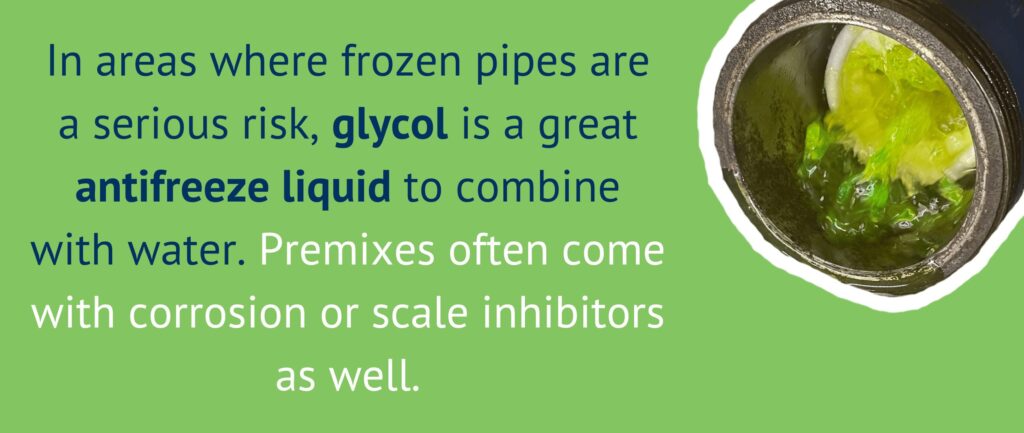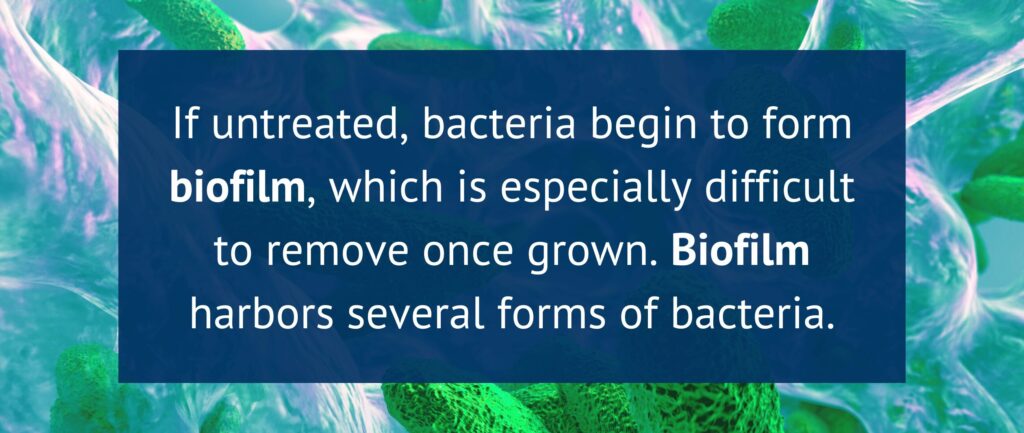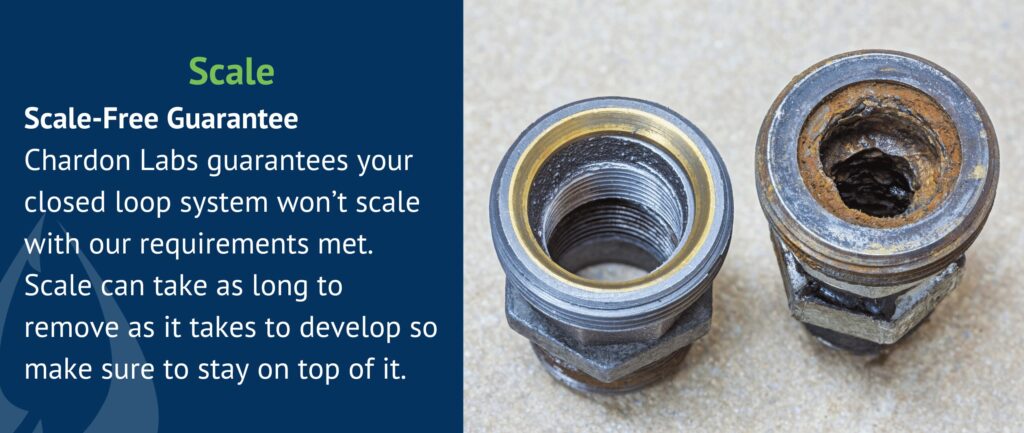
Closed loops, often referred to as a closed recirculating water system, recirculate hot and chilled water. Unless cleaned or flushed, closed loops should retain around 90% of their water annually. Their purpose is to transfer thermal energy without mixing water with external water sources. There are common problems and recommended water treatment standards to keep closed loop systems operating effectively.

In the northern half of the United States, glycol is often used as an alternative to water as it has unique anti-freezing properties. When choosing whether to use water or glycol in your closed loop system, consider the cost of insulating the loops during the colder months and the capital cost of purchasing constant amounts of glycol.
Ethylene glycol is less expensive than propylene; however, it comes with added risks. It is a toxic substance, causing nephrotoxicity if consumed. Alternatively, propylene glycol is significantly safer for humans and requires less special handling.
Closed loops are particularly susceptible to corrosion after being recently cleaned or flushed. This is due to new oxygen entering the system. Rust and pitting will cause the metal surfaces to lose heat transfer properties since the rust layers act as insulators. Additionally, the corrosive pitting will lead to leaks.
The most common corrosion inhibitors for closed loops are phosphate, nitrate, and molybdenum. You can choose to purchase glycol straight or premixed with additives that help regulate pH and minimize corrosion. If you do not purchase the mixed variant, you will have to add these necessary chemicals separately. Phosphate is effective at dealing with corrosion and maintaining pH levels; however, when mixed with hard water, it reacts to create scale. Nitrite and molybdenum have similar benefits for corrosion and pH maintenance. However, they can be mixed with both soft and hard waters, unlike phosphate.

It is worth noting that glycol levels above 20% of the total liquid content will help prevent bacteria. When planning a closed loop treatment plan, consider potential risks for microbiological growth in your system. Dead legs where water is stagnant pose a high risk of developing microbiological organisms. Additionally, when left untreated or not properly treated, biofilm will begin to grow, which is much more resistant to biocides and will require special attention.
Nitrate-reducing bacteria cause corrosion in closed loop systems. If a nitrite-based inhibitor is utilized and the bacteria metabolize the nitrite, ammonia is released. This ammonia creates corrosion such as rust and pitting on the closed loop metal surfaces.
Although oxygen is less common in closed loop systems, there are still some areas with oxygen present. In areas of the loop with higher oxygen levels, aerobic bacteria will initially grow and decrease the oxygen content in the loop. Anaerobic bacteria can develop in these conditions, or areas of biofilm. Anaerobic bacteria produce hydrogen sulfide, which is highly corrosive.
Anaerobic biocides are more necessary due to there being a lower amount of oxygen present in closed loop systems. Both aerobic and anaerobic biocides are necessary to kill aerobic and anaerobic bacteria that can commonly grow in closed loop systems.
1.5% Isothiazolinone is recommended as an inexpensive biocide. Glutaraldehyde and isothiazolin can be used in combination (feeding in separate batches) to prevent the bacteria from developing resistance to either of them. Glutaraldehyde is more effective at dealing with sulfate-reducing bacteria and nitrate-reducing bacteria but is more expensive.

Waters with high levels of pH have high levels of calcium carbonate that will deposit onto the closed loop surfaces in a process known as scaling. Scale build-ups occur in ring deposits that thicken over time if left untreated. The process of descaling can take as long to complete as it took the system to scale in the first place.
The most effective way to prevent scale in closed loop systems is by utilizing scale inhibitor chemicals. Tannin, molybdate, and nitrite are common scale inhibitor chemicals.
An additional way to help prevent scale is by installing an ion exchange water softener that will reduce the calcium carbonate concentration in the water.
Fouling describes material deposits present in water that change its properties. Scale is fouling at the surface, and fouling is from unwanted, suspended solids. Metals gradually build up from corrosion. In addition to metals, microbiological organisms and biofilm can contribute to contaminants in closed loop water. The heat transfer properties of water and glycol are reduced when fouling occurs.

Chardon Labs can help develop a closed loop chemical water treatment plan with our industry-leading standards. We service the mid-West and mid-Atlantic regions of the United States and offer free closed loop, on-site surveys. Click here to learn more about our expertise with closed loops. Reach out to us at (380) 224-7395 or via our contact form.